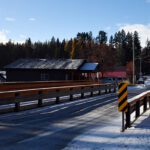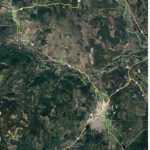Home »

Two tiered cut level set for Invermere TSA
Effective immediately, the new allowable annual cut (AAC) for the Invermere Timber Supply Area (TSA) is 496,720 cubic metres, chief forester Diane Nicholls announced today (June 29). After five years, the cut level will decrease to 424,800 cubic metres.

The mountain pine beetle epidemic and the salvage logging of dead pine are ending in the Invermere Timber Supply Area. This new, two-tier cut level, which is about 17% less than the 598,570 cubic metres set in 2005, reflects a transition to lower mid-term harvest levels. The reduced cut level also reflects the creation of additional wildlife habitat areas, which has reduced the area available for timber harvesting by about 16%, a Ministry of Forests, Lands and Natural Resource Operations press release outlined.
The Invermere Timber Supply Area covers approximately 1.3 million hectares in southeastern British Columbia. Of that amount, about 151,000 hectares are attributable to Tree Farm Licence 14.
Major population centres in the timber supply area are Invermere, Windermere, Canal Flats and Radium Hot Springs. Smaller communities include Wilmer, Fairmont Hot Springs, Edgewater and Parsons. Ktunaxa Nation Council and Shuswap Nation Tribal Council traditional territories are also located within the Invermere Timber Supply Area, as well as Kootenay National Park and 11 provincial parks.
The chief forester’s determination takes into consideration winter range for ungulates, including white-tailed and mule deer, moose, elk, bighorn sheep and mountain goat, as well as habitat requirements for other wildlife, including Rocky Mountain tailed frog, long-billed curlew, flammulated owl, Lewis’s woodpecker, badger, Williamson’s sapsucker and western screech owl-which are managed through wildlife habitat areas.
“After carefully reviewing all of the information on timber and non-timber resources in the Invermere Timber Supply Area, I am confident that this new, two-tier allowable annual cut will ease the transition to a lower mid-term timber supply, while allowing time for local and regional economies to adjust to the lower harvest level,” said chief forester Nicholls.
The chief forester’s allowable annual cut determination is an independent, professional judgment based on information ranging from technical forestry reports, First Nations and public input to the government’s social and economic objectives.
Under the Forest Act, the chief forester must determine the allowable annual cut in each of the province’s 37 timber supply areas and 34 tree farm licences at least once every 10 years.
The allowable annual cut determination is available from the Rocky Mountain Natural Resource District office, or online.
e-KNOW







